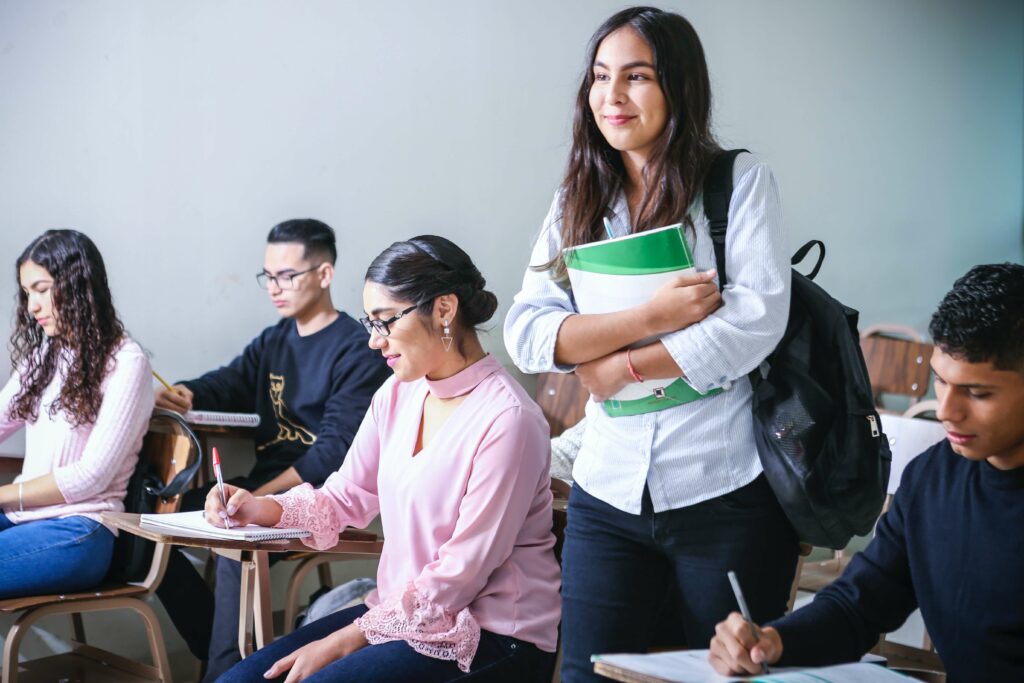Many teachers see the benefits of creating a formal classroom management plan that supports a safe and meaningful learning environment for all students.Classroom management plans are constantly needing to adapt to changing student needs, interests, behaviors, and mental health. COVID-19 is a clear example of teachers having to modify their classroom management plan as students have experienced various behavioral and developmental challenges.
Classroom management is not just about discipline, either. Classroom management creates an environment of respect, harmony, and structure within the classroom. Extremely subtle details can make a huge difference. Any veteran teacher can tell you that a single student can shift the energy of an entire classroom, and creating a strong classroom management plan can help redirect any negative energy back to a positive class environment.
Introductory Classroom Management Course: Creating Classroom Expectations by Premiere gives you the foundational tools you need to stay on top of your classroom management needs so they don’t land on you.
What is a Classroom Management Plan?
A classroom management plan is a strategy for making sure classroom expectations and goals are met, and for dealing with disruptions as they come along. This allows for fair and equitable treatment of all students at all times.
There are many examples of basic classroom management techniques that help students and teachers keep things orderly. Creating classroom norms will help make class time more productive for both the teacher and students.
Here are 5 helpful tips we recommend you consider when creating your classroom management plan.
Create the Foundation of Classroom Expectations
A new teacher will learn a lot during their first year of teaching and a veteran knows classroom expectations can change during their tenure. To help teachers be more efficient with the limited planning time that they have, creating a foundation of classroom expectations vs a detailed set of expectations is recommended.
These expectations should be used throughout all classes and will need limited modifications during the school year. New teachers should rely on their colleagues, new teacher training meetings, and mentors to help develop their foundation of expectations.
Redirect Negative Behaviors and Praise the Positive
Verbal and non-verbal reinforcement of both good and negative behavior are valuable ways of reinforcing expectations. It is important to recognize that not all students will react the same way, so it’s critical to have a variety of options available.
For instance, some students may be embarrassed with positive verbal feedback in front of their peers, while other students may feel empowered when a teacher provides public praise. The same could be said for negative behavior. Teachers will need to be in tune with their students to learn each one’s needs.
Nonverbal communication can also be a valuable tool for a teacher to help redirect negative behavior. If a student is chatting during a teacher’s lesson, the teacher can simply continue talking to the class while walking closer to the student talking, which typically causes the student to stop talking or being distracted. A teacher could also tap their finger on the desk of the student talking, all while continuing communicating and maintaining eye contact with the class.
Be Consistent with Student Behaviors
It is hard for any teacher to predict all the negative behaviors they may see during their teaching lifetime. As teachers gain experience, they will see common patterns of bad behavior (speaking before raising a hand, tardiness, cell phone usage) and develop strategies to combat it.
Whether you are a new or veteran teacher, maintaining consistency is important. If a teacher has a “3 Strike” policy for a student arriving to class with an unexcused tardy, that teacher needs to be prepared to log and record every student’s attendance in order to be fair among all students.
Situations will arise where there may need to be different consequences for the same action. Students may be on IEPs, 504s, or going through a traumatic personal event. Guidance counselors and administration may get involved to inform you to help you modify the consequences accordingly.
Teachers need to explain to their students that fair does not always mean equal. Some students with learning disabilities may need modified tests (such as word banks) while others do not, and the same can be said for behaviors and consequences.
Share Early & Involve the Parents
Share your foundation of classroom expectations with the classroom as early as possible. Students are typically on their best behavior in the first few days because everything is new, and you’re going to want to use that to your advantage. Before any negative behaviors set in, establish those routines and expectations!
Making sure parents are informed about classroom policies is also very helpful for avoiding conflicts and misunderstandings. If a student misbehaves at school, a parent who’s in the loop can be your greatest ally for changing behaviors.
Build, Reflect, and Modify As Needed
Creating classroom expectations is a constant circle of building, reflecting, and modifying as needed. Student needs, interests, and behavior are always changing.
It is never too late to pivot from one classroom management plan to another. If you are struggling with your classroom management plan, pump the brakes and reflect. Have an honest conversation with your students, parents, colleagues, guidance counselors, and/or administration. It is perfectly acceptable for a teacher to adjust his/her classroom expectations at any point of the school year. To help with the transition from one set of expectations to another, it is important to have honest dialogue and full transparency with your students.
Start Creating Your Classroom Expectations With a Classroom Management Plan
Creating a classroom management plan is key to running a safe and effective learning environment. Participating in professional development coursework and establishing foundational knowledge through courses like Classroom Management II: Quick Everyday Tricks to Create a Positive & Safe Classroom Environment by Premiere can help you get ahead of problems with your 7-12 grade students before they start.
All our courses are developed by leading industry professionals. Both Introductory Classroom Management Course and Classroom Management II were created by Tiffany Whitcomb, M.Ed. Educational Strategist, Collaborative Teaching Solutions, LLC.



